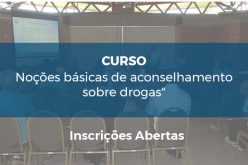Solution-Focused Therapy Worksheets Bundle PDF Templates
.jpg)
Although solution-focused therapy is quite a collaborative approach to treatment, this worksheet will work best when the patient writes their responses outside of session times. This will ensure their answers are honest and genuine, allowing you to develop a more accurate treatment plan. Additionally, it can be helpful for individuals who are struggling with their self-esteem.
The miracle question encourages clients to actively imagine a positive future actively, increasing their engagement and motivation to work towards achieving that desired outcome. This future-focused approach helps shift the client’s mindset from problem-solving to solution-building. The Miracle Question Worksheet is typically used early in the solution-focused therapy (SFT) process, often in the first or second session. This is because the miracle question and the accompanying worksheet are foundational tools to help clients envision and describe their preferred future, which then informs the rest of the therapy (Bannink, 2010).
During development, they spent years evaluating therapy sessions and focused solution focused therapy worksheets pdf on clinician-led questions, behaviors, and statements that resulted in a positive outcome of treatment for the patient. Their concern was discovering the “how” of treatment instead of the “why” behind the problems faced by the patient. Clinicians can use Solution-Focused Brief Therapy (SFBT) worksheets to effectively treat their clients.
- Ask the client to identify the small, observable signs indicating the miracle had happened.
- Additionally, it can be helpful for individuals who are struggling with their self-esteem.
- A solution-focused approach is especially effective in managing stress, anxiety, and difficult circumstances, as it invites clients to focus on solutions rather than problem talk.
- Common techniques include the miracle questions, scaling questions, identifying exceptions (when the problem does not occur), and building on past successes to encourage progress and solution-building.
- These questions encourage reflection, problem-solving, and empowerment by focusing on the client’s strengths and resources.
Get a Closer Look at What’s Included
Once you purchase a worksheet, you are licensed for life for one mental health professional. If your business has more than one mental health pro, we ask that you use the honor system and purchase the correct number you need. The therapist should ask follow-up questions, explore the answers in-depth, help the client develop achievable steps toward their goals, and use the insights from their response to inform the therapeutic process. The final step of the worksheet, where the client identifies specific next steps, helps translate the client’s vision into a concrete plan.
Join TherapyByPro
.jpg)
This encourages the client to visualize specific, concrete details about their life without the problem. This can then be used to set achievable goals and identify the small steps needed. Instances, exceptions and scaling questions to identify behaviours and activities that are already helping a child to move towards their preferred future, and that can help them move closer still.
- Solution-focused therapy uses interventions that require patient involvement to be successful.
- Let them know that the questions are designed to help them reflect on their current situation and envision solutions.
- These questions are a good way for the clinician and the client to gauge progress.
- “It’s a very high-quality worksheet that I will use with clients over and over again. Bonus points for making it personalize-able. Great selection of worksheets to choose from, will be back for more.”
- Focusing on these small signs can help the client recognize and build upon even the smallest positive steps.
At TherapyByPro, we’ve learned what works well with mental health clients, so we’ve designed our mental health worksheets with what we’ve learned along the way. As a mental health practitioner, having the right tools can help you more successfully deliver Existential Therapy to your clients. Our Solution-Focused Brief Therapy worksheets are designed to help practitioners deliver Solution-Focused Brief Therapy to their clients more effectively. Our help line email info @ therapybypro.com is able to help the other .2% almost always to resolve lingering questions + problems without issue. Keeping a record of the strengths, coping skills and achievements a child has made, which they can keep after the work has ended.
Which Conditions can SFBT Treat?
Creating custom worksheets by a professional graphic designer can cost you hours of time and typically $30 to $100+ per hour in design costs, which quickly add up. Our mental health worksheets sell in bulk to mental health pros around the world, so we are able to offer our templates at low costs. Each purchase allows 1 mental health professional the ability to use a worksheet commercially with their clients.
Miracle Questions
.jpg)
Emphasize that the goal is to focus on their strengths, resources, and what they would like to change. Solution-Focused Brief Therapy is an empirically validated form of therapy that has extensive research behind it. Due to its heavy emphasis on focusing on the present and future, it has found much success in treating patients long-term. Also, its ability to be compounded with other forms of therapy make its accessibility versatile. By focusing on the positive aspects that can help them combat the problem rather than the negative “whys”, clients are able to build their self-esteem. If you find an individual that exemplifies the characteristics of the conditions listed above, think of using SFBT to treat them.
These worksheets provide clinicians with the appropriate tools to effectively establish a treatment plan throughout the therapy process. The solution-focused approach is distinct because it helps individuals look to the future they desire, instead of dwelling on their problems. It leverages the existing skills, strategies, and ideas of the child or young person, treating them as the expert in their own life. This method encourages positive changes by asking questions that guide young people towards achieving the future they want. With its practical techniques and solution talk, solution-focused therapy is a powerful tool for solving problems and improving the client’s life. Join more than 10,000 mental health professionals around the world that trust TherapyByPro for tools, forms, and worksheets to streamline their practices and help clients live their best lives.
“This is a GREAT template!!! I can’t wait to give these to my clients. I’ve found it to be detailed but not overly complicated, aesthetically pleasing, and easy for my clients to work on.” This Solution-Focused Therapy Worksheets Bundle can be downloaded and used with all your clients, giving them the ability to fill it out on a digital device or print it out. This amazing resource “Learning how to parent by videos” is an online platform that offers a wide range of video guides to assist parents and caregivers in their parenting journey…. Identifying who in the child or young person’s life support them and will be able to help them towards achieving their best hopes.
Solution-focused therapy uses interventions that require patient involvement to be successful. This specific worksheet is intended for patients to complete outside of session times, ensuring that responses are authentic and patients have a role in developing their treatment goals. Many clients will appreciate it when you encourage such engagement, enabling a more direct therapy treatment method and ensuring that patients continuously work toward positive outcomes.
Once the client has identified their goals, work together to develop a detailed action plan. Break down the steps they need to take to reach their goals, ensuring that each step is manageable and achievable. The action plan should also include potential obstacles and strategies to overcome them. Encourage them to articulate clear, specific goals that are both realistic and meaningful to them. This step helps focus the therapy process and gives the client something tangible to work toward.





